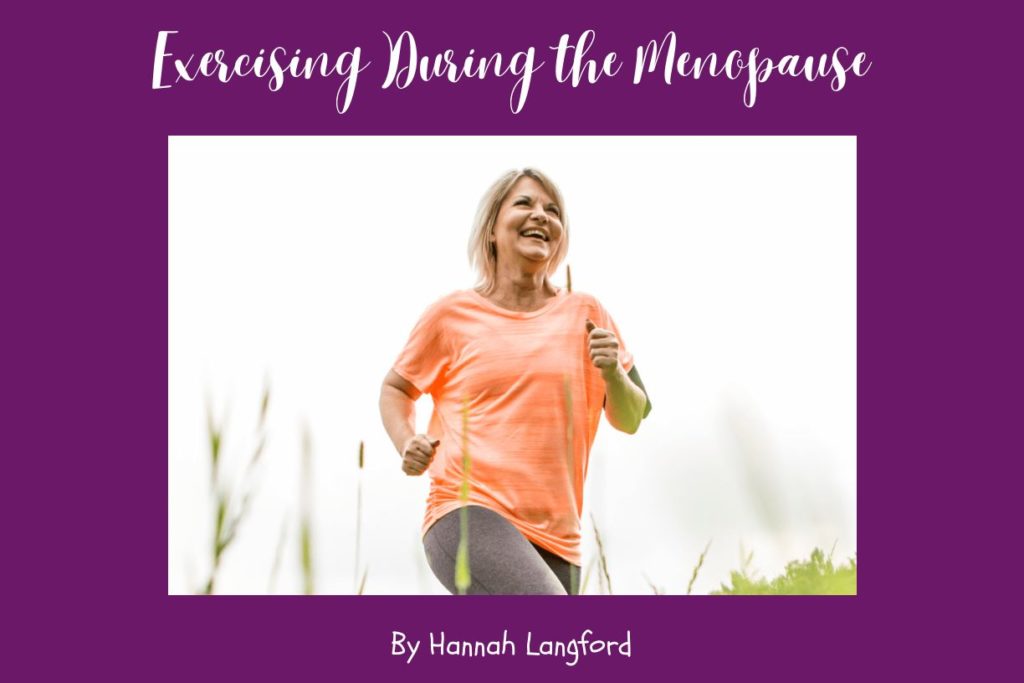Exercising During the Menopause
As today is World Menopause Day, let’s explore how to exercise during the menopause. The menopause is something that, until quite recently, wasn’t often talked about. Celebrities such as Davina McCall have started a much-needed conversation about this important topic. Now we see skincare tailored to those going through the menopause and there is even a musical about this stage of life!
We’ve set out below some guidance about the menopause, how exercise can alleviate symptoms and the best way to exercise during the menopause.
What is the menopause?
The menopause occurs when you stop having periods. This is normally between the ages of 45 and 55, but it can happen earlier. The period prior to this is called perimenopause and this is when symptoms begin. As the name suggests, post-menopause is the stage after your periods have stopped, when the symptoms caused by the menopause usually decrease or disappear entirely.
Can the menopause have an impact on my running?
According to Women’s Running, there are a number of common menopause symptoms that can affect the way you run:
- · Irregular or heavy bleeding (before periods stop, they often become unpredictable)
- · Breast pain: tender, heavy and painful breasts
- · Urinary incontinence (this often becomes apparent or worsens around the menopause)
- · Fatigue that is often unexplained
- · Lack of motivation and a loss in competitive drive
- · Aches and pains before, during and after running
- · Weight gain (body shape and composition naturally changes with the menopause)
- · Headaches, including migraines
- · Hot flushes
- · Clumsiness that can lead to an increase in injury risk
- · Anxiety that can lead to self-doubt and feeling less adventurous
Despite this, as long as you are in good health, the menopause shouldn’t cause you to stop running or doing other types of exercise. Instead, you may find that adapting your exercise regime is the best way to maintain your fitness.
Exercise can, in fact, be a useful way to help moderate some of the symptoms you may be experiencing either prior to or during the menopause. Indeed, even if you haven’t exercised regularly before the menopause, this can be a good time to start, but be careful to begin slowly and not overdo it.
What are the benefits of exercising during the menopause?
The benefits of exercising before and during the menopause include:
- · Lifting your mood through the release of endorphins
- · Helping to regulate your body clock, thereby improving sleep
- · Reducing hot flushes
- · Maintaining a healthy weight
- · Promoting bone health and muscle function (running is particularly good for this)
- · Reducing anxiety and stress
What is the best way to exercise during the menopause?
Adventure has some helpful tips for how to keep active during the menopause:
Cardio care – cardiovascular exercise is vital for maintaining a healthy weight and also keeping your muscles, bones and joints strong. Running is an excellent form of cardio exercise but it is important to be aware of the impact of running many miles.
Be kind to yourself – recovery is just as important as exercise. As women age and hormones reduce, they need more time for recovery. Muscles, tendons, joints and collagen require extra time after exercise to repair and recover.
It is a good idea to do gentle exercise or have a rest day between high-impact exercise days, such as running. Listen to the body and have a rest if you need it.
Warm up and cool down – More important than ever before, women in the menopause years should make sure they do warm-up exercises before running and cool down stretches. This is important to avoid potential injury from tight muscles and joints.
Stay strong – it is important to do at least one session of strength type training each week. This could be a circuits class, body pump, boxing fitness or resistance band training at home.
Body weight exercises and light to moderate weights will help to maintain muscles. This is vital for good physical health because reduced oestrogen and testosterone will cause a depletion of muscle density.
Flexibility – Pilates and yoga are great additions to a weekly exercise programme. Pilates is a low-impact exercise that aims to strengthen muscles while improving postural alignment and flexibility.
There are many different types of yoga, so choose one that suits you. All yoga is good for maintaining flexibility, especially when oestrogen deletion can cause tighter and stiffer joints and muscles.
Massage – Sports massage helps muscles to recover and can potentially guard against injuries caused by over-tight muscles. It’s also a great treat if you have been working hard on your fitness and sport.
Managing hot flushes when you exercise
There is also some specific advice for managing the fluctuations in your body temperature that you may experience during menopause. This includes exercising during the mornings, rather than in the evenings, to avoid contributing to night sweats. If you notice a pattern to your hot flushes, try to avoid exercising at those times. Of course, keeping hydrated is important for everyone, but it is particularly helpful for managing any hot flushes. When you exercise, it is a good idea to wear layers that are fairly loose, which will help you to regulate your body temperature.
We hope you’ve found this advice helpful and that it has encouraged you to maintain a consistent exercise regime both before and during the menopause. For further guidance, you can always speak to Sally, our new strength and conditioning expert. Check out our winter shop for your colder-weather training essentials!

